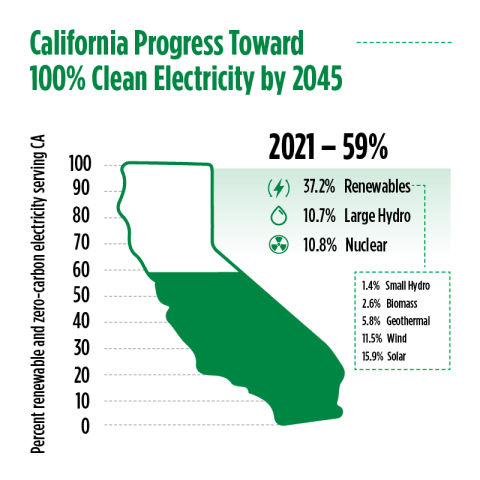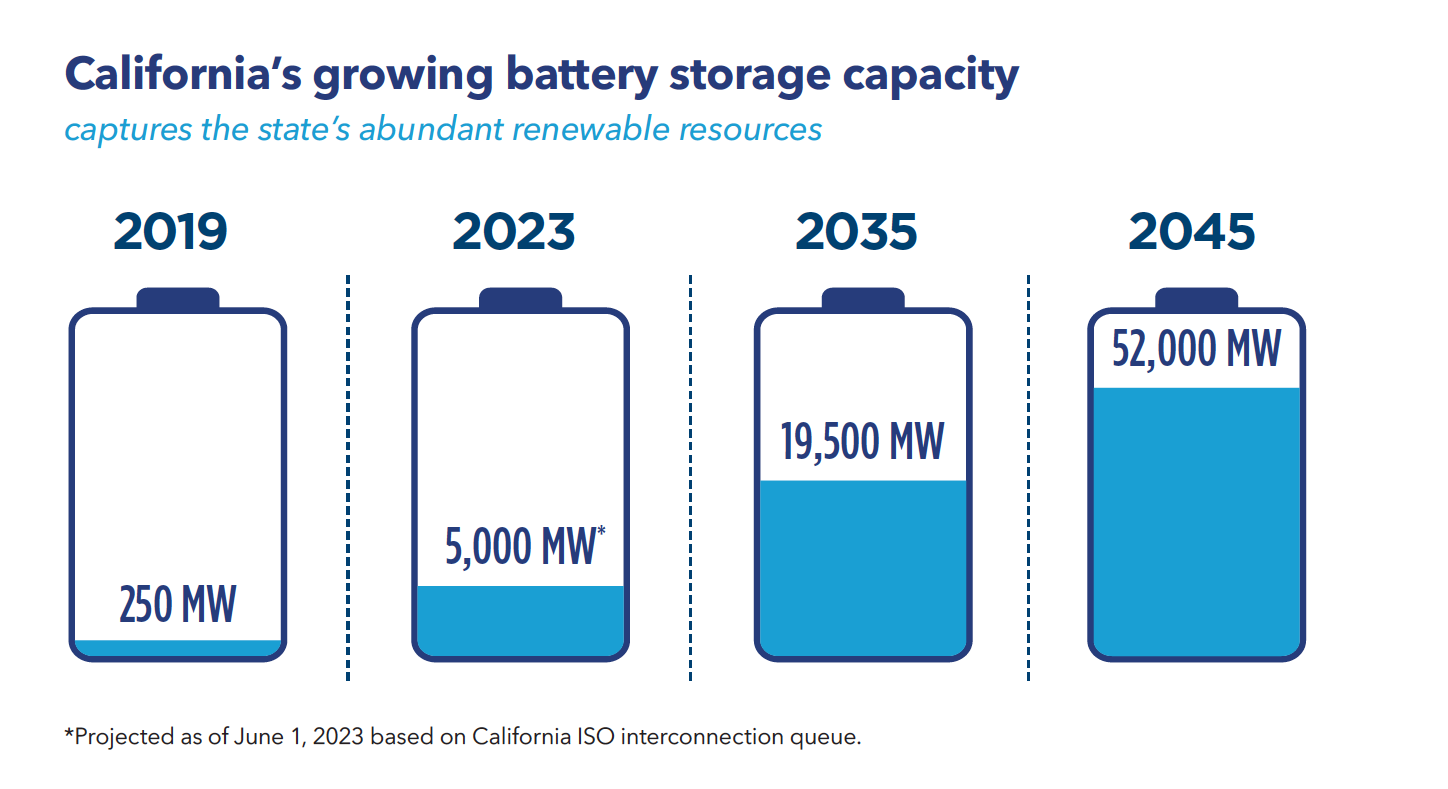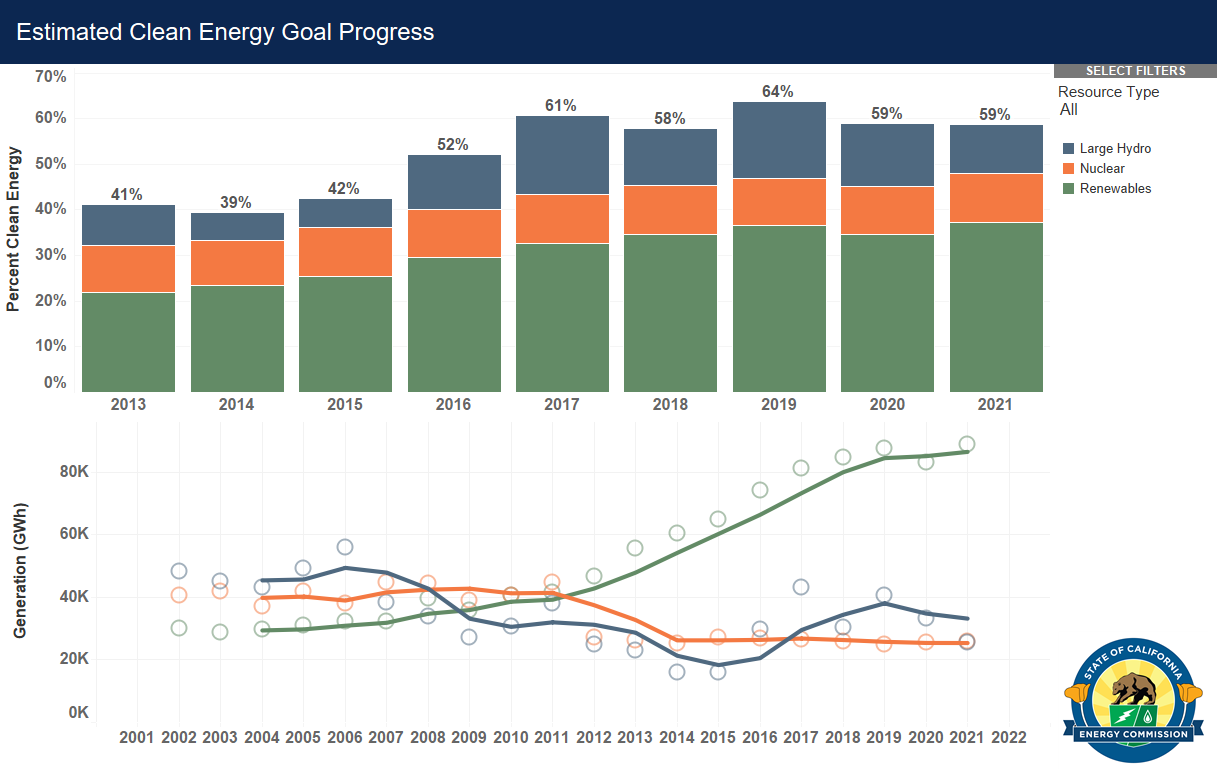
For Immediate Release : May 25, 2023

SACRAMENTO – The latest data from the California Energy Commission (CEC) shows that in 2021 more than 37 percent of the state’s electricity came from Renewables Portfolio Standard (RPS)-eligible sources such as solar and wind, an increase of 2.7 percent compared to 2020.
When combined with other sources of zero-carbon energy such as large hydroelectric generation and nuclear, nearly 59 percent of the state’s retail electricity sales came from nonfossil fuel sources. This amount remains unchanged from 2020 despite the jump in renewables due to drought-related declines in hydroelectric generation.
“This latest report card shows California continues making significant progress toward a 100 percent clean electrical grid of the future that leaves dirty fossil fuels in the past,” said Commissioner Noemí Gallardo, who is the lead commissioner on RPS compliance. “We remain committed to ensuring a healthier and prosperous future for all Californians. By removing barriers to new clean energy projects and funding energy innovations, we will help the state deliver on this vision by mid-century.”
California’s RPS program requires all load-serving entities in California to procure a portion of their electricity sales from eligible renewable resources. The program was established in 2002 with an initial requirement that 20 percent of electricity retail sales be served by renewable resources by 2017. Escalating requirements saw the goal increase to 33 percent by 2020 — a target that was met two years early in 2018.
Senate Bill 100 (2018) accelerates the RPS goal to 60 percent by 2030. The landmark policy also requires RPS-eligible sources and zero-carbon resources to supply 100 percent of California’s electricity retail sales and electricity procured to serve state agencies by 2045. To keep the state on track, last year Governor Gavin Newsom signed SB 1020 (2022), establishing interim targets of 90 percent clean electricity by 2035 and 95 percent by 2040.
Battery Storage Build-Out Reaches Milestone
To complement California’s abundant renewable energy resources, the state is focused on deploying energy storage. According to the California Independent System Operator, battery storage capacity has increased by nearly 20 times since 2019 — from 250 megawatts (MW) to 5,000 MW. Today’s fleet of storage resources can capture enough electricity to power up to 5 million California homes. By midcentury, capacity is projected to increase another 10 times to 52,000 MW.

New Interactive Data Dashboards Unveiled
To help visualize the state’s progress toward 100 percent clean electricity, the CEC has released a suite of new interactive tools with downloadable data on the following topics:
 Graphic of Estimated Clean Energy Goal Progress. View dashboards for more information." width="1217" height="773" />
Graphic of Estimated Clean Energy Goal Progress. View dashboards for more information." width="1217" height="773" />
The dashboards are part of CEC’s effort to modernize and improve accessibility to data products using cutting-edge technology. Other offerings include the Zero Emission Vehicle and Infrastructure Statistics dashboards.
About the California Energy Commission
The California Energy Commission is the state's primary energy policy and planning agency. It has seven core responsibilities: advancing state energy policy, encouraging energy efficiency, certifying thermal power plants, investing in energy innovation, developing renewable energy, transforming transportation, and preparing for energy emergencies.